As folks who enjoy bird photography can attest, anticipating bird behaviour takes quite a bit of observation time as well as some understanding of the environment in which you are shooting. While many birds still puzzle me, this short article shares some images when I correctly anticipated bird behaviour.
The images are the last 20 consecutive photographs from an AF-C run of 40 images shot at 20 fps with subject tracking. The images were captured hand held using a Nikon 1 V3 equipped with a 1 Nikon 70-300mm f/4.5-5.6 zoom lens. I shot in Manual mode using Auto ISO 160-6400, and centre weighted average metering.
Before I show you the AF-C run I thought it may be helpful to give you some background information to add context.
For a number of consecutive mornings over the past week, I had observed two trumpeter swans on one of the ponds at Hendrie Valley. The first swan always arrived alone, landing on the same pond each morning. A little while later, a second bird would land, wings spread like a 747, and its huge feet thrust forward.
Each morning, the arrival of the second bird created quite a commotion with the two swans trumpeting and beating their wings. Initially I thought that a fight was breaking out. It turned out that it was just a spirited greeting, after which the two swans settled right down. The two birds were basically inseparable and spent many hours hanging out together.
On this particular morning one of the trumpeter swans took off from the water and flew off towards a marshy area. On previous days the companion swan would also take flight. Surprisingly it didn’t follow and remained floating in the pond. Having observed these two birds for a number of days a thought jumped into my head immediately – “Once that swan realizes that its buddy isn’t with him, it will circle back around and land.”
Sure enough after flying a few hundred metres the swan began to make a broad sweeping turn and began to circle back to the pond. This gave me time to adjust my physical position so I wouldn’t be shooting directly into the sun. In order to capture as many variations of wing positions as possible I quickly set my V3 for 20 frames-per-second. I then pre-focused my lens on the swan that was floating in the pond and waited for the circling swan to draw in closer.
Since the buffer on my Nikon 1 V3 holds 40 RAW images I knew it would fill in 2 seconds so I had to wait until the returning swan came in pretty close before I began firing. What follows are the last 20 frames of a 40-frame AF-C run. All were shot at 300mm, efov 810mm, f/5.6, 1/2000, ISO-500. All are shown as 100% frame captures without any cropping.
NOTE: Click on images to enlarge.
Anticipating what these two trumpeter swans would do was instrumental in being able to capture this AF-C image run. I’m sure many readers have also anticipated bird behaviour which has led to some interesting photographs. If you have some experiences to share please do so with your comments!
Technical Note:
All photographs were captured hand-held using a Nikon 1 V3 and a 1 Nikon 70-300mm zoom lens as per the EXIF data. All images were produced from RAW files using my standard process of DxO PhotoLab, CS6 and the Nik Collection.
Word of mouth is the best form of advertising. If you like our website please don’t be shy about telling your friends and associates about it. Linking to this site or to specific articles is allowed with proper acknowledgement. Reproducing articles or any of the images contained in them on another website is a Copyright infringement.
My intent is to keep this photography blog advertising free. If you enjoyed this article and/or my website and would like to support my work you can purchase an eBook, or make a modest $10 donation through PayPal, both are most appreciated. You can use the Donate button below. Larger donations can be made to tom@tomstirr.com through PayPal.
Article and all images are Copyright 2018 Thomas Stirr. All rights reserved. No use, duplication or adaptation of any kind is allowed without written consent. If you see this article reproduced anywhere else it is an unauthorized and illegal use. Posting comments on offending web sites and calling out individuals who steal intellectual property is always appreciated!




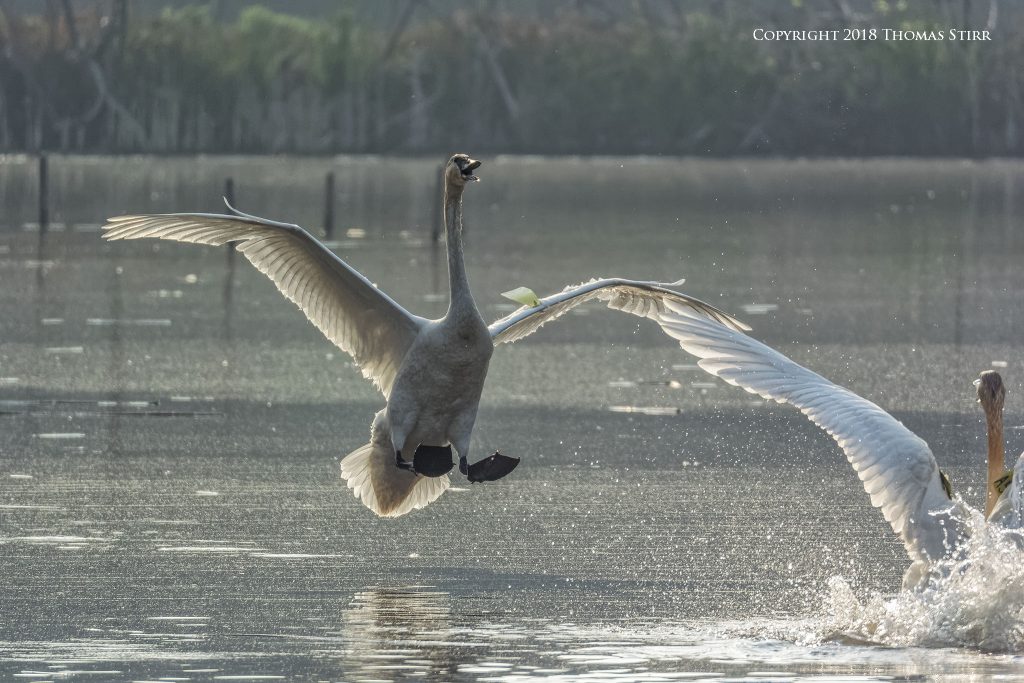







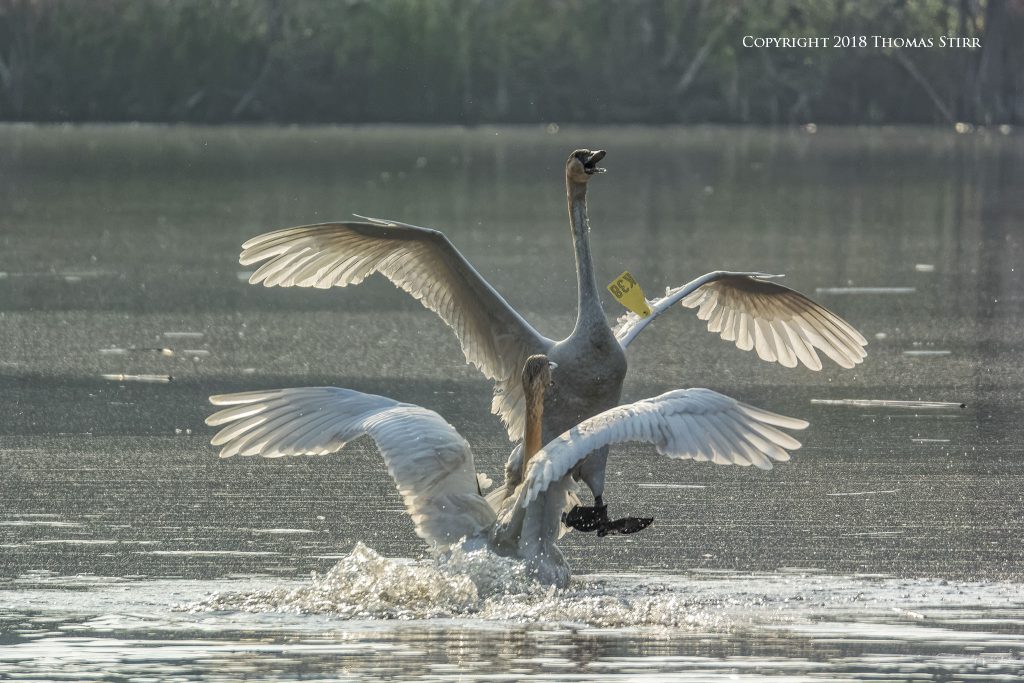

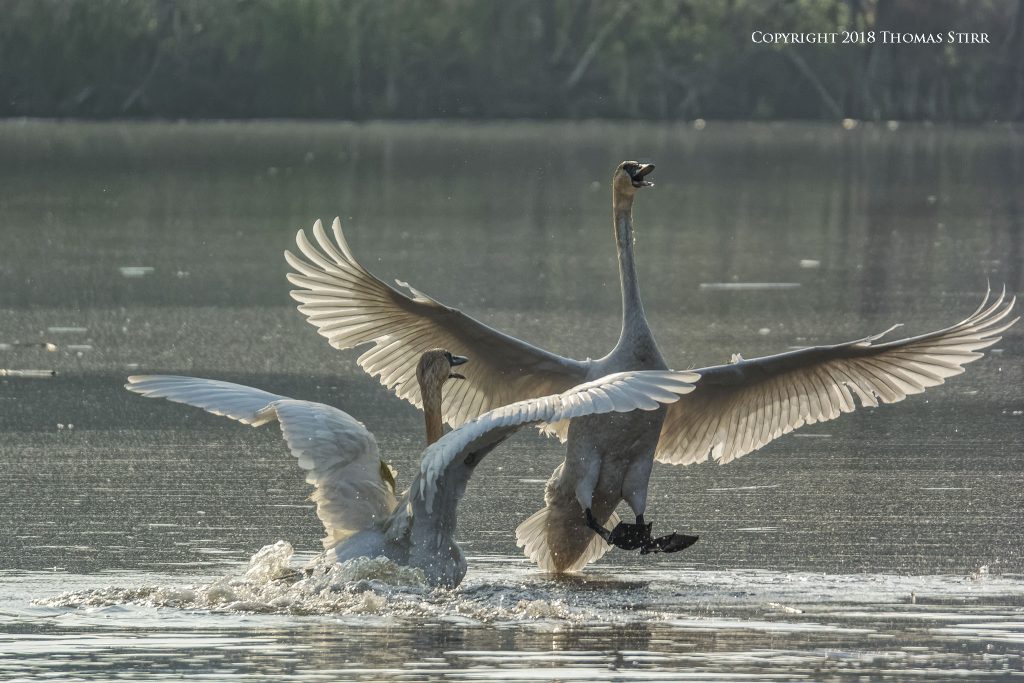
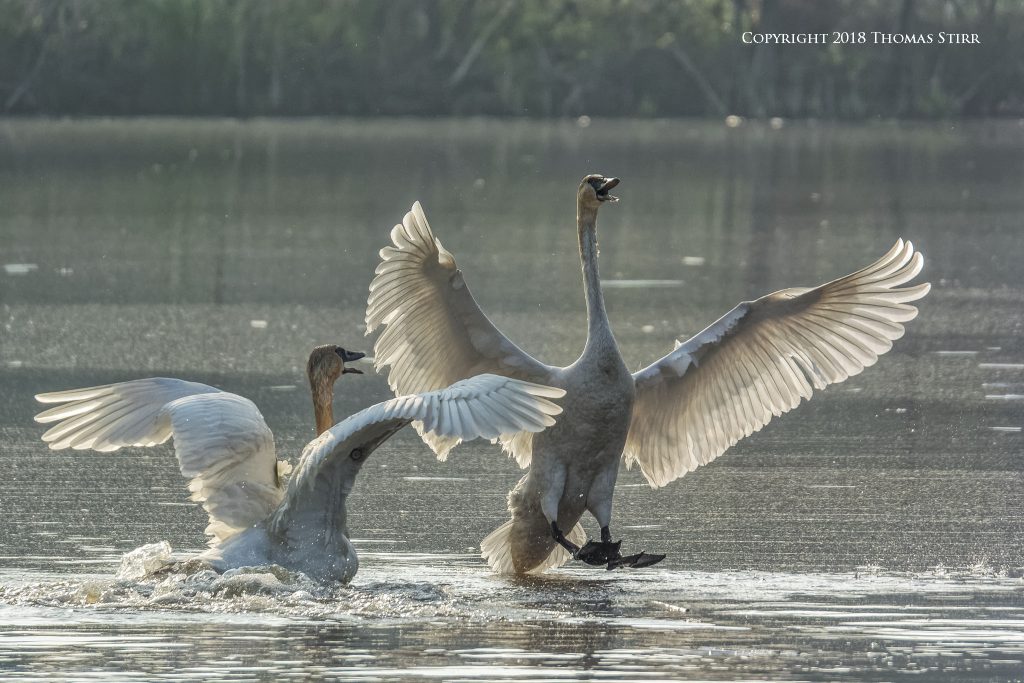
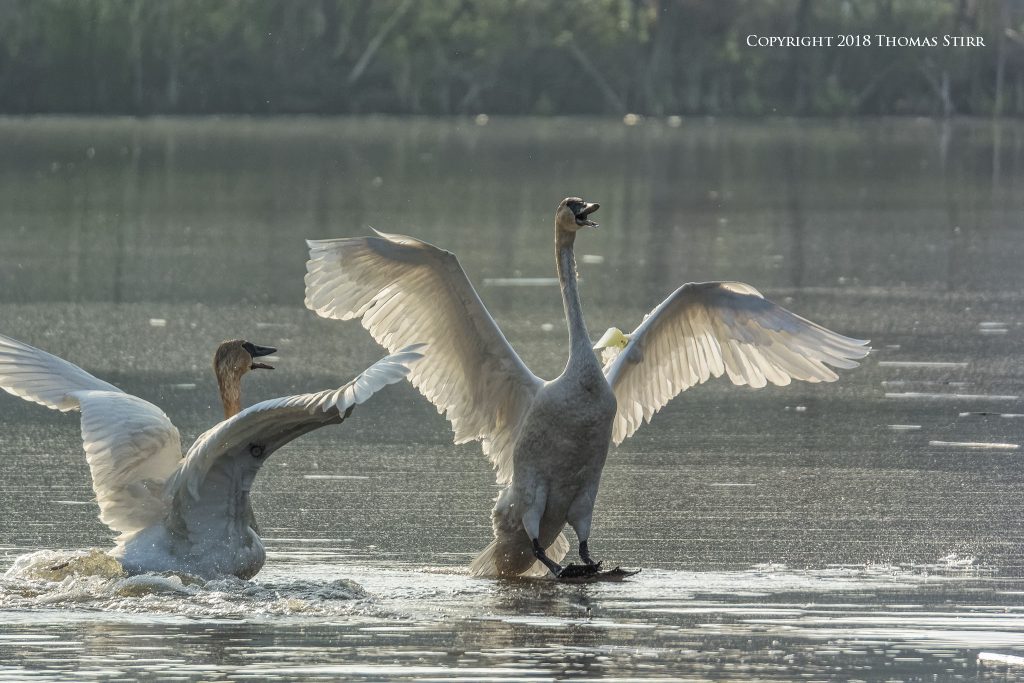
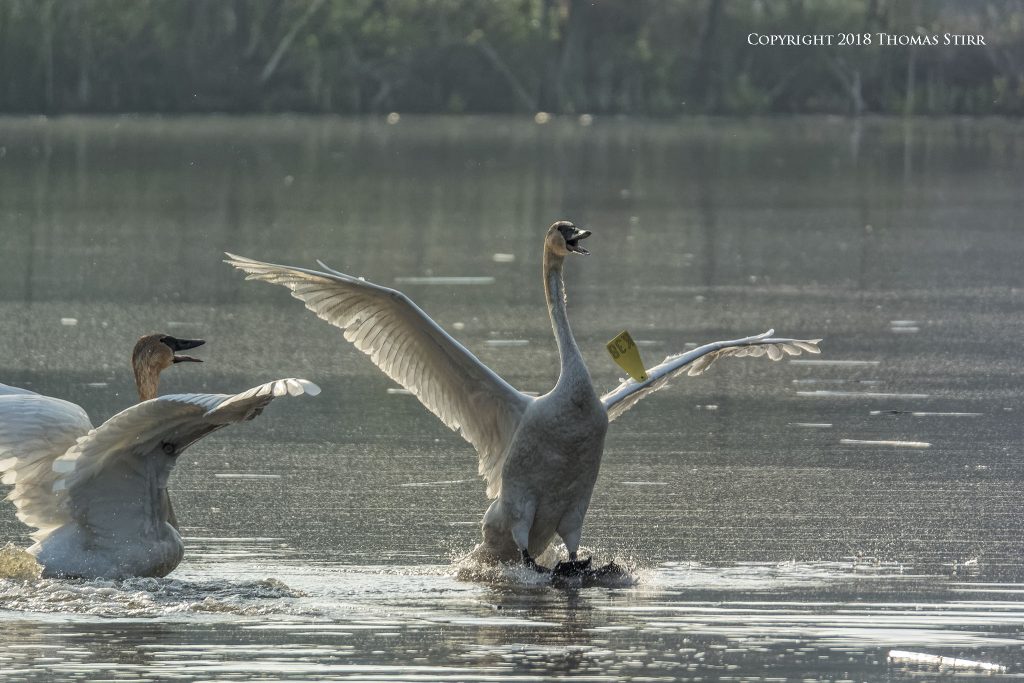




Hi Tom,
Wonderful sequence I must say. It’s true what you say — anticipation is the single most helpful tip in bird photography because a camera buffer can fill up in a hurry. Learning animal/bird behavior is also a great incentive to try capture images, getting to know a little bit of something I didn’t know before which like photography, I think, is a lifelong course in learning.
Oggie
P.S. Was wondering what the yellow thing on the feather until I zoomed in 😀
Thanks for adding to the discussion Oggie! Trumpeter swans are tagged here to help in tracking and assessing the number and health of the species.
Tom